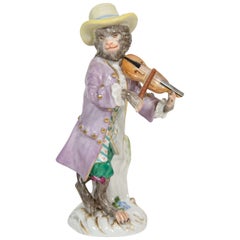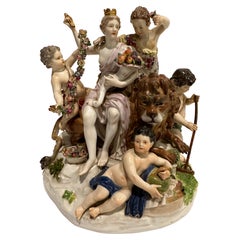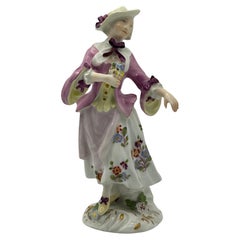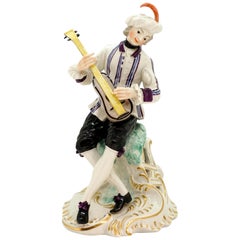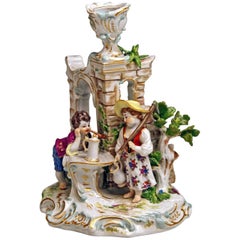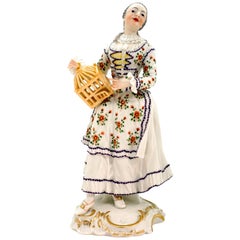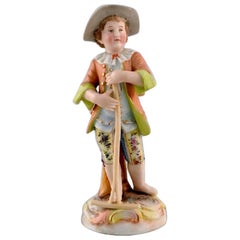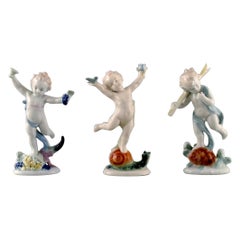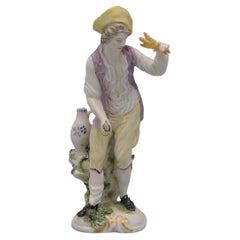Rococo Porcelain Figurines
20th Century German Rococo Porcelain
Porcelain
Antique Late 19th Century German Rococo Porcelain
Porcelain
Antique 1740s German Rococo Porcelain
Porcelain
Vintage 1920s German Rococo Porcelain
Porcelain
Antique 1870s German Rococo Porcelain
Porcelain
Vintage 1920s German Rococo Porcelain
Porcelain
20th Century German Rococo Revival Porcelain
Porcelain
Vintage 1970s German Rococo Porcelain
Porcelain
Antique Late 18th Century German Rococo Porcelain
Porcelain
Antique Mid-18th Century German Rococo Porcelain
Porcelain
Antique Mid-18th Century German Rococo Porcelain
Porcelain
1990s Hungarian Rococo Porcelain
Porcelain
Early 20th Century German Rococo Revival Porcelain
Antique Early 1900s German Rococo Revival Porcelain
Porcelain
Antique Late 19th Century German Rococo Revival Porcelain
Porcelain
Antique 1850s German Rococo Porcelain
Porcelain
Antique Mid-18th Century German Rococo Porcelain
Porcelain
Antique 1870s German Rococo Porcelain
Porcelain
Antique 1870s German Rococo Porcelain
Porcelain
Antique 1870s German Rococo Porcelain
Porcelain
Antique 1870s German Rococo Porcelain
Porcelain
Antique 1870s German Rococo Porcelain
Porcelain
Antique Mid-19th Century German Rococo Porcelain
Porcelain
Antique 1850s German Rococo Porcelain
Porcelain
Antique 1840s German Rococo Porcelain
Porcelain
Antique 1880s German Rococo Porcelain
Porcelain
Antique 1870s German Rococo Porcelain
Porcelain
Antique 1870s German Rococo Porcelain
Porcelain
Antique 1880s German Rococo Porcelain
Porcelain
Antique 1870s German Rococo Porcelain
Porcelain
Antique 1870s German Rococo Porcelain
Porcelain
Antique 1860s German Rococo Porcelain
Porcelain
Antique 1840s German Rococo Porcelain
Porcelain
Antique 1880s German Rococo Porcelain
Porcelain
Early 20th Century Austrian Rococo Porcelain
Porcelain
Antique Mid-18th Century German Rococo Porcelain
Porcelain
Antique Mid-19th Century German Rococo Porcelain
Porcelain
Antique 19th Century German Rococo Figurative Sculptures
Gold Plate
Antique 19th Century German Rococo Revival Figurative Sculptures
Porcelain
Antique 19th Century German Rococo Figurative Sculptures
Porcelain
Mid-20th Century Rococo Figurative Sculptures
Porcelain
Mid-20th Century Russian Rococo Figurative Sculptures
Porcelain
20th Century German Rococo Revival Figurative Sculptures
Porcelain
Early 20th Century German Rococo Revival Figurative Sculptures
Porcelain
Early 20th Century German Rococo Figurative Sculptures
Porcelain
Antique Mid-18th Century German Rococo Figurative Sculptures
Porcelain
20th Century German Rococo Figurative Sculptures
Porcelain
Antique Late 18th Century German Rococo Mounted Objects
Porcelain
Antique 18th Century German Rococo Sculptures
Porcelain
Vintage 1950s German Rococo Figurative Sculptures
Porcelain
Antique 19th Century Rococo Revival Figurative Sculptures
Porcelain
Antique Late 19th Century German Rococo Revival Figurative Sculptures
Porcelain
Antique 1750s German Rococo Figurative Sculptures
Porcelain
Antique 1740s German Rococo Figurative Sculptures
Porcelain
Early 20th Century German Rococo Figurative Sculptures
Porcelain
Antique 18th Century German Rococo Figurative Sculptures
Porcelain
Antique 19th Century German Rococo Figurative Sculptures
Porcelain
- 1
Rococo Porcelain Figurines For Sale on 1stDibs
How Much are Rococo Porcelain Figurines?
A Close Look at Rococo Furniture
Rococo was an aesthetic movement in the fine and decorative arts in the 18th century that found its inspiration in nature and fostered an overall lightness and delicacy of form, construction and ornament in interior design. Rococo furniture, while greatly influenced by trends in Italy and Germany, is often called Louis XV style — the movement having reached its best expression during that sybaritic French king’s reign.
The term “rococo” is thought to be a portmanteau of the French words rocaille and coquilles — “rock” and “shells” — organic motifs frequently used in architecture and design of the style.
When it comes to authentic Rococo furniture's characteristics, it is above all sensuous and social. The furniture of earlier eras in Europe had been heavy in every sense; the Rococo period saw the appearance of light-framed upholstered armchairs, side chairs and occasional tables that could easily be moved to form conversational circles.
The signal detail of Rococo furniture design is the gently curved cabriole, or S-shaped chair-, table-, and cabinet-leg. It imitates the bend of a tree limb or a flower stem. In a further reference to nature, furnishings were often asymmetrical and painted white, or in soft, pastel shades. Rococo has become a timeless style, and as the furniture pieces presented on 1stDibs demonstrate, its playful, sculptural forms can provide visual excitement to contemporary, clean-lined spaces.
- 1stDibs ExpertApril 5, 2022The term ceramic is a generic term that refers to something that is made of clay and solidified through heat. Porcelain falls under the ceramic umbrella, but it incorporates kaolin as an ingredient, creating a white clay. To determine if a figurine is porcelain or stoneware or earthenware, it’s best to examine it. Porcelain is somewhat translucent with a glasslike surface where there is no glaze. Shop a range of antique and vintage porcelain figurines on 1stDibs.
- 1stDibs ExpertSeptember 9, 2024To tell vintage porcelain figurines apart from other pieces, look on the bottom for a maker's mark. Then, consult trusted online resources to determine the approximate time when the manufacturer produced pieces similar to yours. It is vintage if your figurine was manufactured between 20 and 99 years ago. Older figurines are antique, while newer ones are contemporary. A certified appraiser or knowledgeable dealer can also assist with the dating and identification process. Shop a wide range of vintage figurines on 1stDibs.
- 1stDibs ExpertApril 5, 2022One thing to look for in an antique porcelain figure is to look for the maker’s mark, usually found on the bottom of the piece. The porcelain figure will also have a delicate fragile quality to it. On 1stDibs, find a collection of antique porcelain figures from some of the world’s top sellers.
- 1stDibs ExpertApril 5, 2022The difference between porcelain and ceramic figurines is the materials used to produce them. Porcelain is a delicate white material, while ceramic tends to be heavier and varies in color depending on the type of clay used to produce it. Shop a wide range of antique and vintage figurines on 1stDibs.
- 1stDibs ExpertMarch 22, 2022No, every Fornasetti porcelain figurine is handmade. In fact, the brand produces all of their home decorative items by hand at their workshop in Milan, Italy. If you see indications that a figurine came from a factory, it is likely not an authentic Fornasetti. Shop a collection of expertly vetted Fornasetti on 1stDibs.
